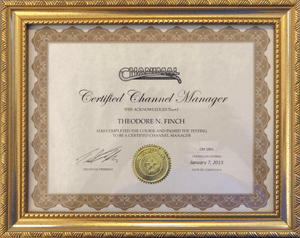Public Relations (PR)
Effective promotional efforts begin with PR. According to Business Wire, the press is 15 times more believable than advertising, and 1/7th the cost. Because the press is so believable and an affordable way to get the word out globally, a good marketer should execute an extremely aggressive, creative, and continuous press campaign throughout the year.
PR Topics (click on the link or menu to jump to the section):
- Target Audience
- Editorial Schedule
- Reviewer’s Guide
- Press Releases
- White Papers
- Case Studies
- Crisis Management
- Media Training
- Messaging
- Tracking & ROI – PR
- PR Q&A
- Clipping Services
Rationale
For many products that are in the early adopter phase of the technology adoption cycle, “referencing” is the single most important promotion to drive a product into the early majority stage (where sales start to skyrocket). The early majority of buyers are looking for “proof of concept” that your solution is both possible and profitable. This evidence is necessary to convince risk-averse management that they should precede with deployment. Once convinced, the early majority acts and the market takes off, which paves the way for the later majority, and so forth.
Referencing can take the form of testimonials from customers, white papers and case studies, references from consultants and industry analysts (such as the Gartner Group, Cahner’s In-Stat, Aberdeen, Forrester, Jupiter, and others), and product reviews with positive affirmations within trade press, business or consumer press—in print or online.
Possible PR tactics for the year would include the following:
- Product announcements
- Press releases announcing wins, alliances, case studies, user reactions, roadshows, growth, etc.
- Industry trade press tour
- Business/Consumer press tour
- Analyst interviews and meetings
- Product spokespeople introduced to the press as industry experts
- Product review submissions
- White papers and ghost-written articles
Objectives
Objectives are simple: your product should be the default name and your CEO/President/GM should be the spokesperson for the entire product category. For this to happen, it is critical to get a lot of “impressions.” In advertising, it often takes 7-9 impressions (exposure to an ad) to cement a brand name and value in the mind of the audience. To create action (sales orders), it often takes even more exposure.
You need to ensure that every influencer for your product is exposed to at least seven impressions. Every prospective customer, reseller, and every potential alliance who is influencing a product decision needs to know about your product and its positioning (we’re assuming that its value proposition is compelling).
The first phase of a PR campaign creates brand awareness among your product influencers. The second phase creates brand awareness among prospective customers. The first phase involves branding the analyst, press, and resellers (if sold within the channel). In addition, depending on the size of your company, you would plan several internal initiatives to create awareness and interest in the product.
Resources
- Review Management. Part of PR is controlling your reputation. This is critical for some businesses that live and die by reviews on sites like Yelp, and Google and over 600 review sites. You can do it manually, but it can become unwieldy if you have a lot of responses or locations, so you’ll often use review management software. One that I highly recommend is ReviewInc.com. You can check out their website, but if you want a quick demo, click HERE.
Contact Info
Chanimal, Inc.
12109 Lake Stone Dr
Austin, TX 78738
512-263-9618
Click HERE to Email
Follow us on Facebook
NOTICE
I join a LOT of affiliate programs (connoisseur–like to see what they do), including Amazon, so there may be links throughout Chanimal.

